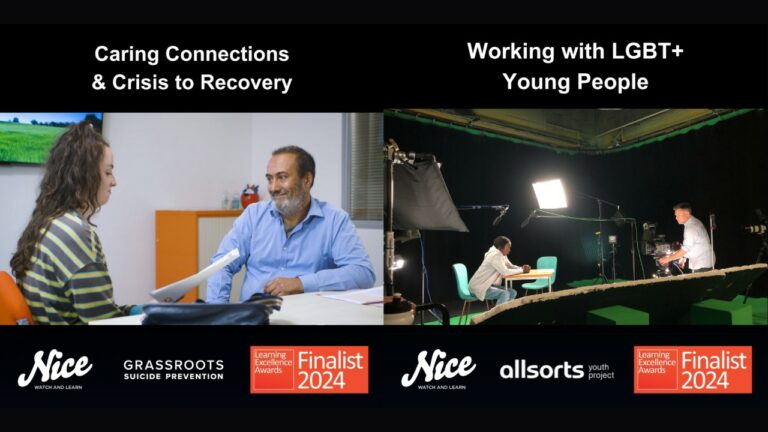We are all currently learning how our working practices will need to change in light of the COVID-19 pandemic. A relatively unique aspect of working in filmmaking and video production is that we dip in and out of many different industries. Over the years we have worked with supermarkets, banks, transport companies and car manufacturers, to name a few. COVID-19 has led us to review our risk assessment policies and procedures and consider the unique environments that we film at from another angle.
At the time of writing, it is one of the UK government’s objectives to get the construction sector back to work. It seems that protocols have been undergoing heavy review and testing to ensure that the sector can continue with work safely.
Some of our crew recently carried out some filming at a construction site. Our director of photography made a list of observations that we’ve used below to offer some insight into how filming on construction sites is being impacted by COVID-19 – and to show how it’s still possible to conduct a safe and efficient shoot on a construction site. In fact, there is an argument to say that it’s easier because of the measures in place.
General workplace guidance during COVID-19 pandemic
There is a pot of advice and guidance that falls under ‘general’. By that, we mean that these factors can apply to any shoot day, regardless of industry sector. These are:
If you’ve had symptoms, stay at home
No one should come to work if they are showing any symptoms of COVID-19, including a high temperature or a new, persistent cough. Similarly if you are in a household where another member is symptomatic you must not come to work. This follows general government advice.
Travelling to work
Wherever possible, people should avoid public transport and travel in their own cars / on bikes.
If sharing vehicles is absolutely necessary, it’s important to travel with the same people. Hand washing / sanitizing procedures should be followed; before entering the vehicle and before leaving the vehicle. The vehicle should be cleaned regularly – especially handles and any other surfaces that a passenger may touch with their hands. Good ventilation is also advised – i.e. open windows.
Handwashing
Individuals need to take responsibility for using the on site facilities to wash hands after using the bathroom facilities.
It’s also important to wash hands before and after using any equipment. This is a requirement of both construction sites but also for our video production crew.
Taking temperatures
On some sites, workers’ temperatures are taken at the beginning and end of shift to ensure no one is coming to work with an elevated temperature. This won’t always be practical but it’s one of the surest ways, with a test, to know if someone could genuinely have the virus.
For more guidance you can visit the GOV.UK website and there is also more advice from the World Health Organisation here.
Food and drink
Bring your own
Workers should bring their own food and drink to work. We are insisting on this as a rule, regardless of the type of shoot. Whether it’s in a studio with two people or on a construction site with a much larger workforce. Everyone taking responsibility for their own food and drink removes the need for the use of shared cooking and cleaning facilities.
Shared break / eating areas
Canteens should have tables spaced so people sitting on a table can be sufficiently distanced from others. Ideally facing the same direction. In addition, individual break times need to be staggered throughout the day so that there are fewer people in canteen at any one time.
Put rubbish in the bin
Individuals should put their own rubbish in the bin and not leave it for anyone else to clean up.
On-site working practices
There are a number of specific ways that on site practices have had to be evolved in order to maintain social distancing and reduce the risk of transmission.
Personal Protective Equipment (PPE)
Appropriate PPE to be worn at all times. In the case of our filming crew, in addition to fluorescent jackets, helmets, steel toecap boots and safety glasses, latex gloves should be worn on entering the site and removed only when people have left the site.
One-way systems
You may have already seen one-way systems in place in shops e.g. supermarkets. On a construction site, a one-way system should operate wherever possible throughout the site, including into changing areas and canteens. This is a simple and effective strategy that our filming crews can easily adapt to.
In addition, working areas need to be kept separate from walkways / thoroughfares with barriers to protect those working on tasks near where people are passing.
Signage
It sounds obvious but clear signage should be everywhere so that people understand what’s expected of them in different areas.
In addition to signage, there now needs to be people designated as responsible for ensuring safety and distancing regulations are complied with. (this is essentially an extension of on-site Health and Safety).
Pace of work
An observation which is based on anecdotal feedback from construction workers and from being on site, is that the pace of work appears slower because habits are being broken, e.g. when a task requires more than one person it might take a little longer than usual. However, on the flip side, fewer people in any one area is tending to lead to more efficient working and greater productivity. This is cancelling out the apparent slowness from the new social distancing measures.
We are yet to be able to say either way whether or not social distancing measures are having an impact on the productivity of our shoots. At the moment, this isn’t our priority. Our priority is to keep our crews, clients and the public safe.
A new layer, not an entirely new procedure
From a filming perspective, there is of course a new layer of consideration. This applies in terms of:
- How we guide our staff and contractors in terms of safe practices before arriving on site
- How we prepare and instruct them to behave whilst at the location.
These processes were in place already; site visits (recce’s) and risk assessments are our standard procedure because preparation is the key to a safe and efficient shoot. Now we have an extra layer to consider during that process. So the process is not new, there’s just more to it now – because there is an imminent and obvious threat. What is particularly interesting is that the mantra that ‘we are all responsible for health and safety’ has never felt more relevant for all of us.
We have a policy that we won’t conduct any of our work with businesses / locations that aren’t enforcing stringent procedures to maintain social distancing. In this sense, construction is therefore our perfect industry partner!
If you are considering commissioning some filming on a construction site or at another location that requires careful, thorough consideration, please do get in touch. We are happy to have a no-obligation conversation to explore any unique potential challenges and solutions.







